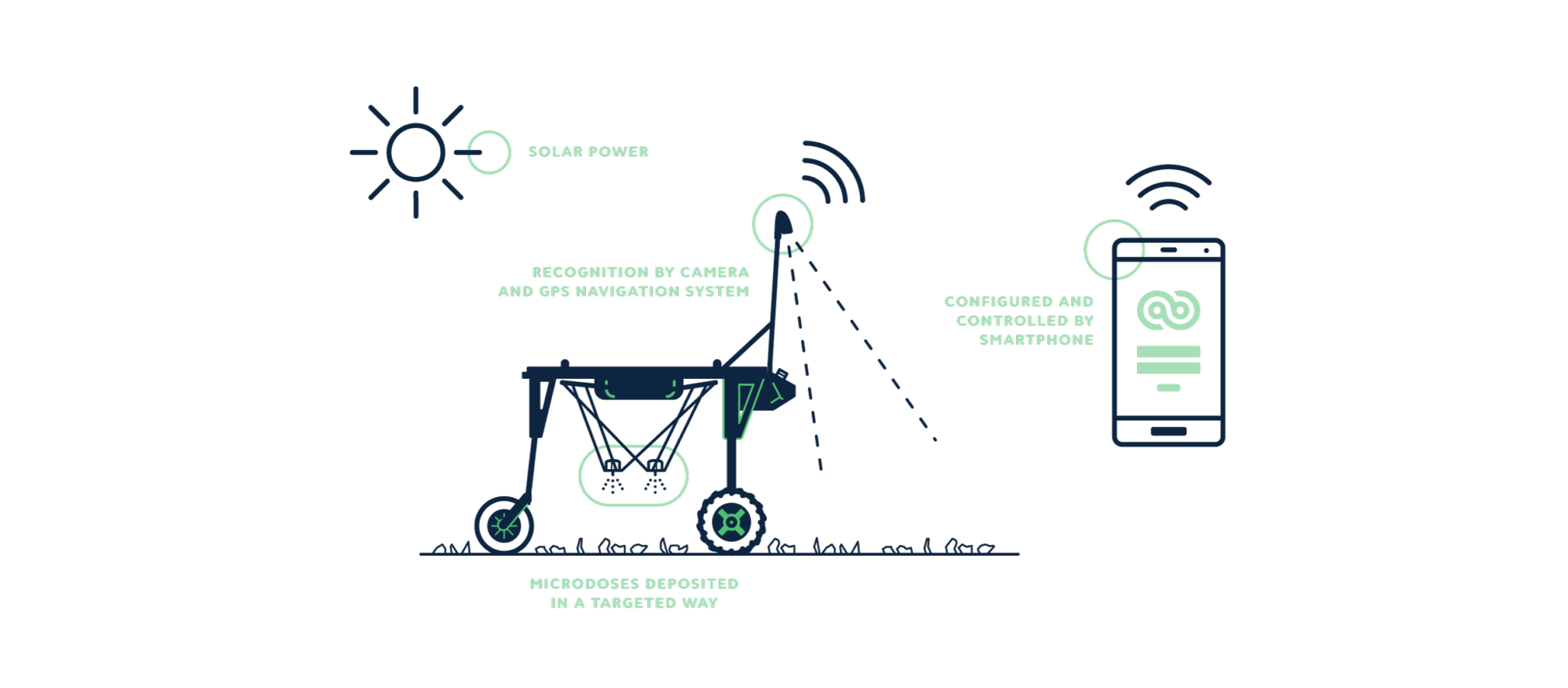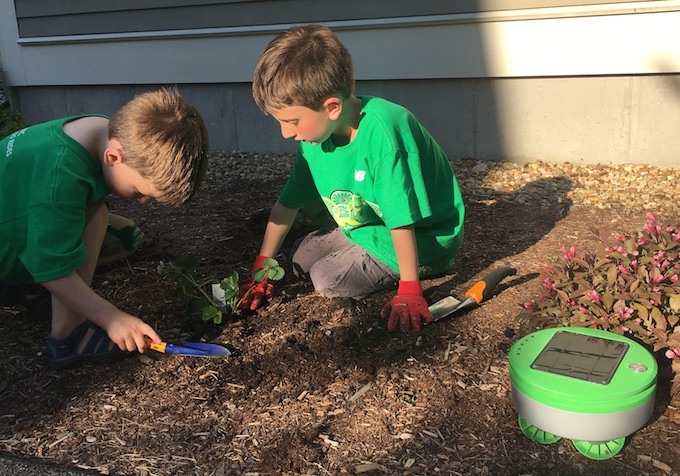
Solar Powered Weeding Robots
Gardening is a hobby and it is familiar practice in buildings, Bungalows, ground and Parks. Gardening enhance the Beauty of Nature. Beauty vanishes when weeds grow between flowers and vegetables. Removal of weeds is very necessary because it spoils the look of a beautiful landscape. For that purpose normally we use different herbicides, weedisides and techniques to stop growing. sometimes herbicides weedisides harm the applicator and other people also. Normally Heavy and large machinery used to cut and spout weed from a landscape. But the Machinery affects the plants and vegetable also and disturb the whole look of nature. As we know science plays a vital role in the new world. Scientist creates Reboot for weed spouting in a small area. At that time there are two types of Reboots used for weed spouting. One is Tertill Reboot and other is Autonomous Weeding Robot.
Tertill Robot:
Tertill is a solar-powered and weather proof robot that weeds your garden every day. With Tertill, gardeners can now enjoy weed-free vegetable and flower gardens, without the monotony and frustration of weeding. Organic gardeners can breathe easy and enjoy a weed-free, chemical-free garden all season long.
Created by roboticist Joe Jones – inventor of the Roomba – Franklin Robotics’ Tertill is designed to live in your garden and take care of the weeding, come rain or shine.

Specifications:

How does it work?
Tertill lives in your garden and prevents weeds from becoming established. Using unique design elements and a variety of sensors, Tertill patrols the garden daily, avoiding plants and obstacles while looking for weeds to eliminate.

How does it know what’s a weed and what’s a plant?
Tertill has a very simple method: weeds are short, plants are tall. A plant tall enough to touch the front of Tertill’s shell activates a sensor that makes the robot turn away. A plant short enough to pass under Tertill’s shell, though, activates a different sensor that turns on the weed cutter.

Because Tertill’s approach is height-based, put one of the provided plant collars around short plants until they are tall enough for Tertill to recognize. When Tertill approaches the collar, it will recognize it and turn away.

How does it get rid of weeds? Won’t they come back?
Tertill whacks weeds using a spinning string trimmer, which cuts the weed off near the ground. Because Tertill lives in your garden and goes looking for weeds every day, weeds are always small when the robot finds them.
Will Tertill get stuck?
Tertill uses four-wheel-drive. This helps Tertill move through soft soil, sand, and mulch, and also helps Tertill climb slopes. Its distinctive diagonal wheels make Tertill more stable on slopes and help it get past certain terrain challenges.
Tertill relies on several sensors and clever programming to keep out of trouble. To detect objects like the garden fence and big plants, Tertill uses sensors similar to those found in many smartphones—the lightest touch is all it takes. To detect steep slopes, Tertill uses the same sort of sensor that tells your cell phone which way is up. Tertill can also sense if a motor stops turning—perhaps jammed by a rock—so it can protect itself from damage.
How does Tertill know where the edge of my garden is?
There needs to be at least a short barrier around your garden to keep Tertill from wandering away. The barrier might be a fence, edging that’s two inches or taller, or the wooden border of a raised bed.
Tertill has a simple, reliable strategy to ensure that it covers the garden. It uses a combination of bouncing away from, and sometimes following, obstacles and plants. This is the same strategy employed by some models of Roomba and other robotic vacuums. so that’s why it is more efficient in use because it doesn’t move outside the boundary.
Autonomous Weeding Robot:
There is sufficient equipment available to control the weeds between the rows, weed control in the rows (intra-row weeding) still requires a lot of manual labour. This is especially the case for crops that are slowly growing and shallowly sown likes sugarbeet, carrots and onions. In 1998, on average 73 hours per hectare, sugar beet was spent on hand weeding in the Nether-lands. The required labour for hand weeding is expensive and often not available. An autonomous weeding robot replacing this labour.
After an initial shower of herbicide, it’s time for a targeted and precise application – just the amount that is needed, exactly where it is needed.
Specifications:
20X LESS HERBICIDE
Thanks to the precise detection and discriminating spraying of weeds.
100% AUTONOMOUS
Works up to 12 hours a day without a human operator – solar powered, no rechargeable batteries.
130 KG OF SIMPLICITY and work better
Lightweight design minimises soil compaction – reliable, robust and non-hazardous.
The robot works without being controlled by a human operator. It covers the ground just by getting its bearings and positioning itself with the help of its camera, GPS and sensors. Its system of vision enables it to follow crop rows, and to detect the presence and position of weeds in and between the rows. Two robotic arms then apply a microdose of herbicide, systematically targeting the weeds that have been detected.
Reliance on solar power makes the robot completely autonomous in terms of energy, even when the weather is overcast. As it adapts its speed to the concentration of weeds, it is most suitable for use in fields where the level of concentration is low to moderate, in order to cover the ground at a reasonable speed. We recommend using the machine after an initial standard application of herbicide, in order to replace subsequent applications and thus save an important amount of herbicide. The machine can be completely controlled and configured by means of a Smartphone app.
Remodeling Contractors in Glendale, CA

Solar-Powered, Weed-Killing Robots Could Save Farmers Billions of Dollars on Herbicides


















